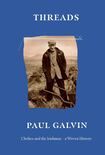
“I can’t wear hats. I just get slagged,” bemoans Dara Kiely on Gilla Band’s latest record. This amusing lyric typifies something about the Irish man’s psyche: macho men are liable to mock their peers for sartorial flourishes.
So, former Gaelic footballer Paul Galvin’s career trajectory is unusual, even commendable. Having left the virile sporting world behind, he pivoted to fashion, finding success designing various collections in a partnership with Dunnes Stores. Accomplished in two fields, he’s now writing books.
Galvin’s collections for Dunnes Stores are story-driven, incorporating different elements from history into his designs. Each chapter of Threads focuses on the people informing each collection, followed by a description of the clothes themselves.
Galvin’s knowledge of history is rich. The book is intermittently engaging, particularly when Galvin is detailing the more remarkable and outlandish characters — like Mohed Altrad becoming a billionaire after escaping his Bedouin tribe where Altrad’s brother was killed by their father; or the tale of James F O’Connell, allegedly tattooed by Pacific Islanders and who then went on to work in PT Barnum’s “freakshow”.
READ MORE
And yet, Threads can feel sluggish. One is left wondering why a book comprising accounts of such intriguing and wide-ranging figures as Floyd Mayweather, Thomas Shelby and Andre The Giant (whom Samuel Beckett improbably chauffeured) can lead to waning engagement.
The book’s problem is structural. While Galvin writes fluently, Threads feels like a patchwork, an amalgamation of things he finds interesting. There’s no overarching, central thesis to bind everything together, making the book feel directionless, plodding and less than the sum of its parts.
Galvin is most interesting when he shows vulnerability, citing being “laughed at sometimes, for [his] clothes”. Fleetingly, there are insights that make you perk up, such as this issue of Irish men shaming each other’s enthusiasm for fashion and the importance of bucking this convention. Galvin winningly states that “we must allow young men that freedom of expression as a means of building self-esteem”. If these kinds of concerns were more hardwired into his depictions of noteworthy individuals, Threads would be more absorbing, but this hodgepodge doesn’t feel in service of some greater purpose. By detailing the impressive feats of these mavericks, Galvin probably intends to underscore the need for individuality and self-expression, but he draws few conclusions to develop his unique perspective.












